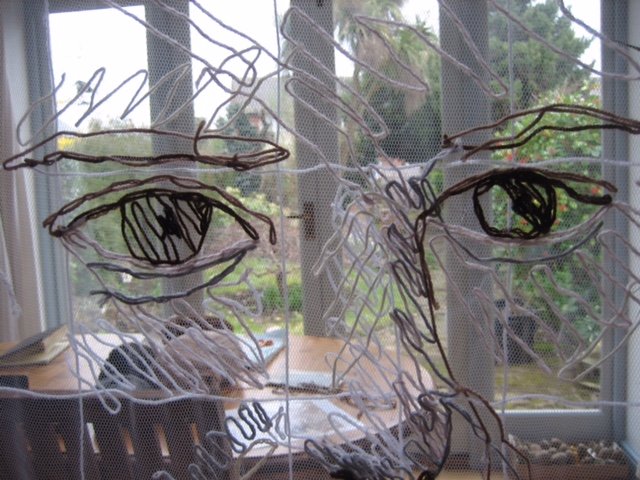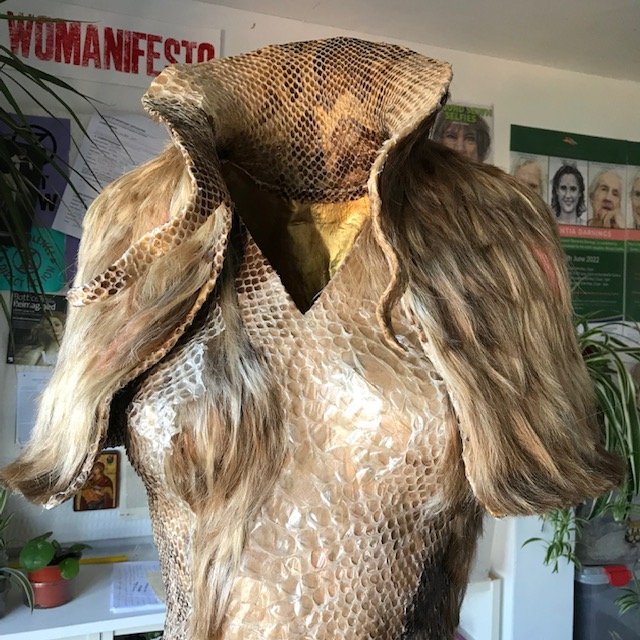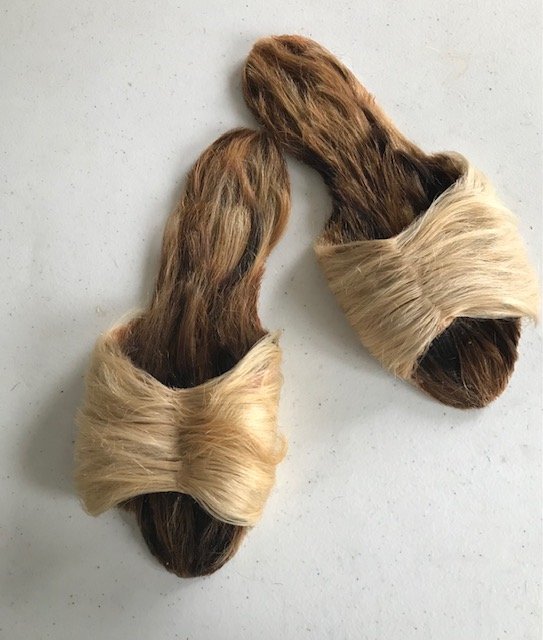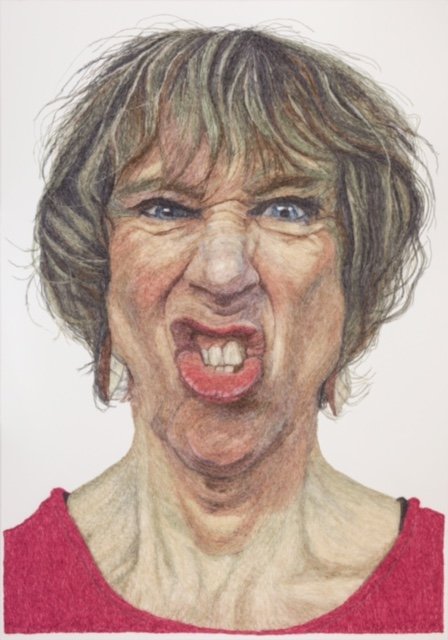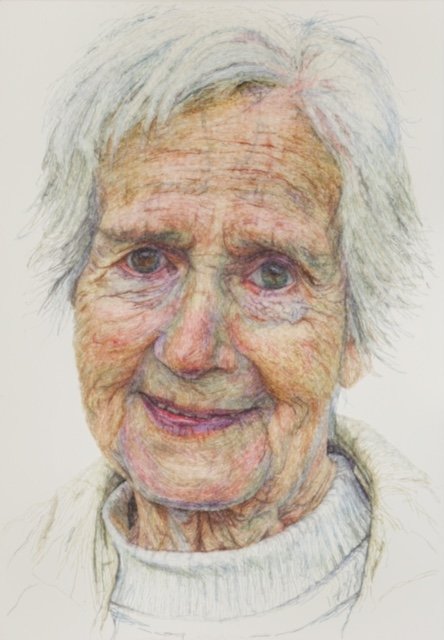ARTIST INTERVIEW: Jenni Dutton
what inspired you to become an artist?
I don’t think anything inspired me to be an artist, I have always been one in one way or another. Throughout my childhood, I made things. I carried on a studio practice through motherhood and my teaching career, which I left early to fully concentrate on my work.
’The Dementia Darnings’ is a very powerful series of portraits you have created. when did you first come up with the idea? Why is this series so important to you?
The Dementia Darnings developed from my mother’s interest and joy in looking through family photo albums. She was diagnosed with dementia in 2011 and as my role as carer increased, it seemed only possible to continue my practice by making her and our situation the subject of my work. She enjoyed having me around, watching me curiously when I occasionally brought the canvases to her house to work on. I was amazed by her reaction and her engagement with the process given her deteriorating memory.
I never intended to make so many; 16 in all. I just kept going as the challenges of conveying my mum’s deteriorating health with stitch was compelling.
The series is important to me because it’s about my mum and ageing, but also because I was exploring a technique new to me.
When did you first start experimenting with stitch portraits? What is it about your medium that you love? How does your medium reflect the messages you’re trying to convey to the viewer?
I don’t consider myself a textile artist. I work in many mediums but I did enjoy the time spent on my texties work. Working with stitch is about time and so-called traditional women’s work, I feel like I’m building the image. But it takes so long to make a piece; 4 months. They’re too demanding on my back, so I’m working on other things now.
Tell me about your process for creating one of your stitch portraits.
I work with anchor tapestry walls, dividing them up into their 4 stands, ironing each strand. I stretch fine netting known as ‘bobinette’ over a canvas and then sew into the netting. I cover up most of the canvas, only exposing the section i’m working from. A photo is squared up; as is the canvas, the image I’d worked on, sketched out in thread and gradually worked into. I keep the canvas upside down so I don’t anticipate what the details look like. So, I don’t see the final image until I have nearly finished the piece.
What was your inspiration for your conceptual clothing? What has been your favourite piece to create?
Conceptual clothing allowed me to experience working in the round, again with the female form. I have returned to that now and I am loving it. I have no favourites, just the one I’m making currently from human hair and shed snake skins.
How has creating artwork helped you?
Making work is absolutely essential to my well-being. I can’t explain any more than that.
Who is your favourite artist? If they were sat next to you right now, what would you ask them?
I don’t have a favourite artist but I did travel with Cornelia Parker on a train last week. I was too shy to say hello, and I’m not sure what I would ask her if I could. I think I’d just tell her that her work is awesome.
Out of all your work, which piece are you most proud of?
The last piece I made is always the one I’m most proud of.
Why do you think art is important in society?
Society is nothing without creativity, visual arts, music and movement. I work a lot with an Extinction Rebellion group. We make and perform to get the message across. Much more powerful than a strongly worded email.







